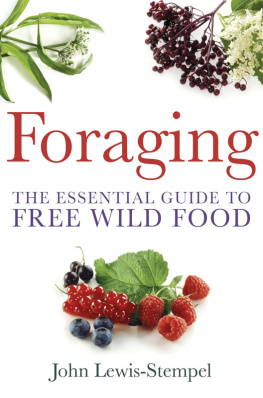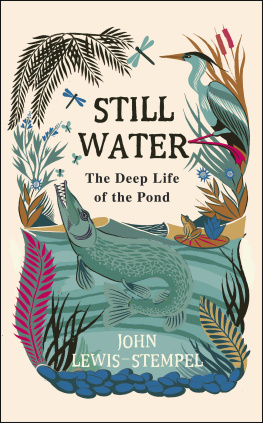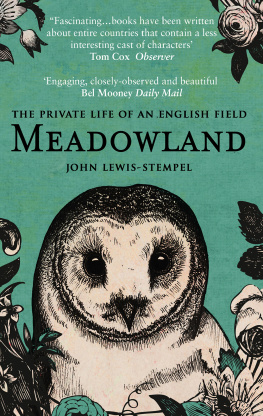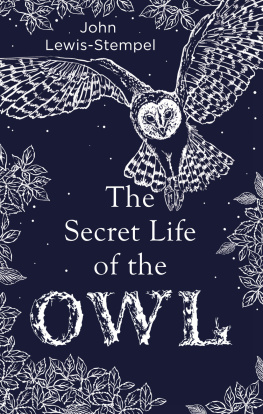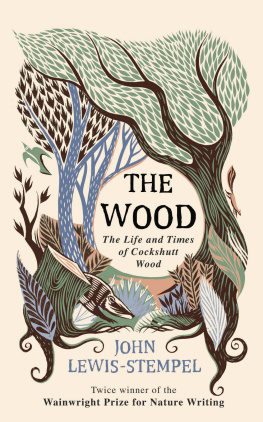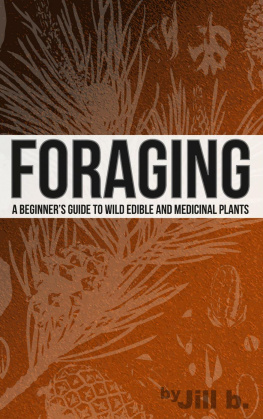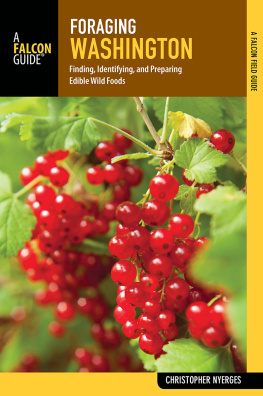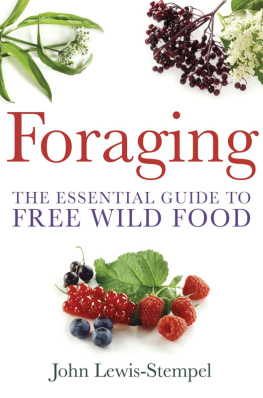FORAGING
ABOUT THE AUTHOR
John Lewis-Stempel is a forager, farmer and writer. He is the author of the acclaimed The Wild Life: A Year Spent Living on Wild Food, described by the Sunday Telegraph as Fascinating... timely and compelling and by The Ecologist as A life lesson for us all.
Other books by John Lewis-Stempel
Fatherhood: The Anthology
England: The Autobiography
The Autobiography of the British Soldier
Six Weeks: The Short and Gallant Life of the British Officer in the First World War
Young Herriot: The Early Life and Times of James Herriot
FORAGING
THE ESSENTIAL GUIDE TO FREE WILD FOOD
John Lewis-Stempel

Constable & Robinson Ltd
5556 Russell Square
London WC1B 4HP
www.constablerobinson.com
This edition published by Right Way,
an imprint of Constable & Robinson, 2012
Copyright John Lewis-Stempel 2012
The rights of John Lewis-Stempel to be identified as the author of this work has been asserted by him in accordance with the Copyright, Designs & Patents Act 1988.
All rights reserved. This book is sold subject to the condition that it shall not, by way of trade or otherwise, be lent, re-sold, hired out or otherwise circulated in any form of binding or cover other than that in which it is published and without a similar condition including this condition being imposed on the subsequent purchaser.
A copy of the British Library Cataloguing in Publication Data
is available from the British Library
ISBN: 978-0-7160-2310-4
eISBN: 978-0-7160-2321-0
Printed and bound in the EU
1 3 5 7 9 10 8 6 4 2
CONTENTS
ACKNOWLEDGEMENTS
Thank you to all the following for help and inspiration: Alison Delaney, Andy Hamilton, Judith Mitchell and Duncan Proudfoot at Constable & Robinson, Leslie Peach, Nick Weston. And, naturally, Penny Lewis-Stempel.
DISCLAIMER
Readers are advised that a number of wild plants and mushrooms are poisonous and their ingestion can cause illness, even death. Consequently, it is vitally important that the identity of a mushroom or plant is established beyond doubt before consumption. If the identity of a plant or mushroom is in doubt do not pick or eat it. In some individuals allergic reactions may occur from touching or ingesting non-poisonous plants and mushrooms, and the attention of readers is drawn to the guidelines on trying unfamiliar foods in .
The author and publisher have made every effort to ensure that the information contained in this book is accurate. Information regarding edibility, however, is for guidance only. No legal responsibility can be accepted by the author or publisher for any errors contained in this book, or for any illness, physical or mental reaction or injury arising from information provided, or omitted, herein.
1
WHY EAT WILD FOOD?
Is there such a thing as a free lunch?
Even in the twenty-first century, much of the landscape of Britain is covered by wild plants, many of which are edible. And frequently they are free for the taking.
This book is a guide to the one hundred weeds and mushrooms that are good enough to eat. And, as importantly, you might actually encounter in the great outdoors. There are over 400 food plants and mushrooms growing wild in Britain, but some are truly horrible on the tongue, while your chances of bumping into a Silky Volvaria on a walk in the country are slim. More, there are plants, like the Cowslip, now too rare to pick. There is advice in the following pages on recognition you really dont want to impersonate Lucrezia Borgia and poison all and sundry but this is, above all, a book about what to do with your foragings, which bits of the plant to use, how to prepare meals and drinks from them, and how to preserve them.
It is possible to gather sufficient wild food to make a considerable dent in the household budget; I once lived for a year just on what I could find in the natural larder. This year of living wild in the country required a fulltime Mesolithic lifestyle and few, I suspect, would wish to emulate it (picking sloes from Blackthorn bushes in driving snow for days in a row with fingers scratched to bloody ribbons is definitely not fun) but equally I am sure that a bowl of Nettle Soup, which is in every way delicious, probably tastes just that bit better because you know it cost next to nothing to prepare.
Truth to tell, foraging has many virtues above and beyond penny-saving. In hedges, in parks, and on the coast there are flowers, leaves, nuts, berries and seeds that are Superfoods to rival, even beat, the most exotic fruits of the Amazon jungle. Rosehips contain 20 per cent more vitamin C than an orange, while the humble Hazelnut contains more protein pound for pound than a hens egg. Many wild plants are highly burgeoningly nutritious. Numerous so-called weeds were once cultivated and have simply fallen out of culinary fashion. Fat Hen and Sorrel are just two such plants to fall by the wayside of changing taste. And the level of nutrition in a wild plant you pick yourself is unlikely to deteriorate much on the walk home, unlike the packaged products of the supermarket fruit and veg section, which have the life chilled out of them on a 5,000 mile air journey.
It goes almost without saying that a forager can have a diet unknown to a shopper. When did you last see a Cloudberry or a Pignut in a shop?
Foraging, though, should be as much about mental as physical health. The soul as well as the stomach. Going foraging is a chance to connect with nature, to appreciate and understand it. Simply being outside and seeing green can make a difference to wellbeing; when Henry Thoreau, of Walden fame, wrote Staying inside the house breeds a sort of insanity always, he was more right than he knew. Modern scientific research shows that the hospital patient exposed to nature, even if it is just the sight of a tree through a window, heals more quickly than the one who is not.
You are never closer to nature than when you are picking it, but the relationship has to be respectful and sustainable. Jumping in a VW camper van and charging around the countryside, snatching a wild food here, there and everywhere as the fancy takes isnt foraging; its a smash-and-grab raid on nature. Take some time to study your foraging environment, get to know it, and check from time to time on its well-being.
Foraging, of course, is just another way of saying hunter-gathering. , Wild Food By Type, allows you to plan a meal, should you be seeking roots for a starchy filler, leaves for a green vegetable, wild fruit for pudding, herbs for flavouring.
The shortage of Mammoths for the modern spearperson aside, hunting animals is fraught with problems, ethical, legal and technical. But in case you do fancy getting in touch with your inner carnivore, I have suggested some meat-gathering methods open to all: hunting Snails and Shellfish, and picking up road-kill.
Wild food is the ultimate in organic and seasonal. The rhythm of nature is wonderful and reassuring. The botanical clock also means that most wild foods are only available for certain periods of the year. To eat gathered food beyond its season, you will have to preserve it, whether in jams, chutneys, wines, or by drying or freezing. There are instructions too on preserving methods for your gathered bounty.
Foraging as a hobby, as healthy living, or simply as a way of enlivening a walk can be done almost anywhere. It is a misconception that foraging is only for bucolic folk deep in darkest hedgerow country. Wild food is everywhere. On the coast, up mountains, beside rivers, in marshes. My cousin has an allotment in north London; I admire his vegetables, but I could not help but notice that his neighbours overgrown plot was a running cornucopia of edible weeds. Perhaps the neighbour had discovered the universal truth of gardening: it is so much easier to grow weeds than official vegetables. The boundary of the allotment site (where allotmenteers had discarded unwanted plants in decades gone by) was positively The Town and this number of urban edibles could easily have been doubled.
Next page
